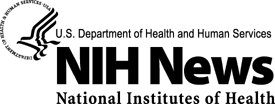 |
|
|
FOR IMMEDIATE RELEASE:
July 27, 1999 #99-03 NIEHS CONTACT:
Bill Grigg (301) 402-3378 27 Jul 1999: Wide Use Leads to Push to Test Safety of Four HerbsFour herbal products - aloe vera, ginseng, kava kava and milk thistle - and a substance in vegetables thought to inhibit cancer have been recommended by a panel representing the federal health agencies for toxicity testing under the National Toxicology Program (http://ntp.niehs.nih.gov/) at the National Institute of Environmental Health Sciences (http://www.niehs.nih.gov). Program officials said today that the National Cancer Institute (http://www.cancer.gov/) Before making a final decision to test the substances, NTP is requesting public comment and any additional scientific information be sent to Dr. William Eastin, NIEHS/NTP, Box 12233, Research Triangle Park, NC 27709, or email him at Eastin@NIEHS.NIH.gov by Sept. 7, 1999. The four herbs are aloe vera, which is used as a dietary supplement as well as a cosmetic; ginseng, which is promoted for vigor; kava kava is used as a mood elevator, and milk thistle, is considered by some to have anti-cancer and liver-protective properties. The fifth nomination is for indole-3-carbinol, a substance in cruciferous vegetables such as broccoli, and thought to have potential to reduce the risk of cancer. NTP, which is headquartered at NIEHS in Research Triangle Park, N.C. (http://www.rtp.org/)
Although all nine substances were nominated by health research agencies, nominations may also be made by businesses, unions and the public. A formal announcement of the request for comment is in the Federal Register vol. 64, no. 129, pp. 36704-36707. |
|


